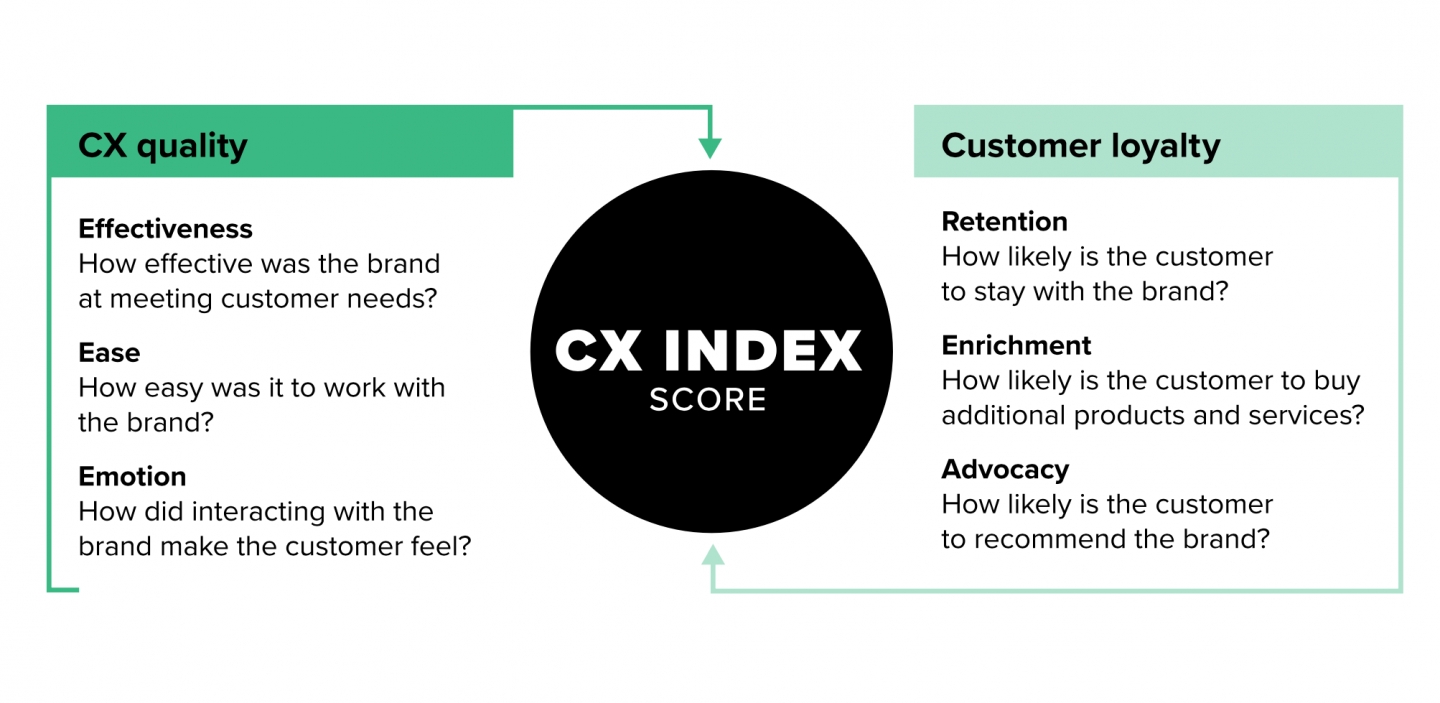An Inside Look At The Forrester B2B CX Index
- Written by Kelly Lindenau
- Published in Blog
Amongst the multitude of innovations and research revealed at Forrester’s B2B Summit, Forrester VP Analysts Laura Ramos and Michelle Yaiser turned their focus to a growing topic of interest: Customer experiences (CX). In their session, “The Forrester B2B CX Index: Score How Customer Experience Quality Impacts Loyalty,” the experts discussed how Forrester translated the traditionally B2C-driven CX Index over to B2B and revealed which aspects of CX matter most and how to apply these learnings to benchmark an organization’s customer experience progress and success.
To learn more about the CX Index, the Demand Gen Report team sat down with Ramos and Yaiser to better understand the Index and its application to B2B marketing.
Demand Gen Report: Tell me more about the CX Index. What inspired its creation?
Michelle Yaiser: Forrester has been researching customer experience for more than 20 years now — and a primary area of focus is assessing the quality of experiences companies are delivering to their customers. As the years progressed, we realized that companies in general were starting to ask, “Why should we care? Sure, it’s important for the customer and good for the brand, but there has to be another reason.”
So, we went back and did a lot of research and developed the “2.0” version of the CX Index (derived from our B2C Index) that ties the quality of experiences that companies deliver to customers’ loyalty decisions — such as retention, enrichment, advocacy and reference — and tie all those factors to the company’s bottom line, because good CX drives revenue.
DGR: Is The CX Index a singular framework that applies to B2B across the board, or is it more adaptive across industries and businesses?
Laura Ramos: Each industry has its own unique algorithm we use to calculate a score, but we consider the algorithms an apples-to-apples comparison because it’s really a relationship between how quality impacts loyalty.
There are four loyalty decisions that are most important on the B2B side: Value, effectiveness, reliability and emotion. And while those factors are important across all industries, there’s different relationships between each. We’re in the very early pilot stages of the research, but for example, we’re already seeing that while traditionally value was most important in professional services, emotion might be taking over the No. 1 spot. So we’re analyzing how the same qualities play a different role in the algorithm.
DGR: What’s your “elevator pitch” for why B2B marketers should adopt this Index to better measure their customer success initiatives?
Ramos: Marketers struggle with measuring many things, and we often see them resort to measuring whatever they can instead of what actually has an impact. There are some popular metrics out there — NPS and customer satisfaction, for example — that only give you a partial picture of what’s important in your customer experience. This methodology, framework and algorithm can get you much closer to what matters.
DGR: What were some of the driving factors this ideology of customer-centricity to build better relationships with existing customers and prospects?
Yaiser: From the CX perspective, there’s so much qualitative and quantitative data that marketers have realized that a good customer experience is acknowledging that there’s a human behind the data, not just a dollar sign, that will drive revenue. But it’s not just revenue; good CX increases brand awareness, trust, forgiveness and willingness to pay more. There’s so much research — from Forrester and other companies — that show the benefits of treating your customers as a human.
Ramos: From the marketing side, we do a lot of research where we ask B2B marketers what’s important to their business — and CX is now always coming up at the top of the list. Growing revenue is always No. 1, but CX is always No. 1. I’d even say it’s more like 1A and 1B.
Yaiser: CX and marketing are really starting to blur as we look at organization structures; there’s many time where CX reports into marketing and vice versa. You might have a chief customer experience officer that has the marketing team below them, or you’ll see a CMO that has the CX team below them.
DGR: How will the CX Index make up for the gaps in current customer experience strategies?
Yaiser: When you think about the practice of CX, we have customer journey maps of what it’s like once you become a customer. With the CX Index, we measure existing customers — there’s no prospects. Any buying cycles are on renewal, cross-sell and up-sell. When you think about the handoff, it’s this beautiful relationship of understanding the journey through buying and then understanding it a customer coming back to engage more with the company. And that’s where marketing has missed the buyer component. We’re really trying to connect the dots for a true end-to-end customer experience.
Ramos: Most B2B companies — typically mid-size and above — get the majority of their revenue from existing customers. And as we move more toward SaaS, that’s only going to increase.
Related items
-
 Drift Welcomes New SVP Of Product
Drift Welcomes New SVP Of Product
-
 Showpad’s EOS™ Aims To Align Marketing/Sales, Enhance CX
Showpad’s EOS™ Aims To Align Marketing/Sales, Enhance CX
-
 How B2B Organizations Can Prevent The Disruption Of Long-Term Growth Amidst Economic Uncertainty
How B2B Organizations Can Prevent The Disruption Of Long-Term Growth Amidst Economic Uncertainty
-
 Avoid 7 Common Pitfalls To Advance Solid B2B Marketing Plans
Avoid 7 Common Pitfalls To Advance Solid B2B Marketing Plans
-
 Experiment, Invest & Refine GTM: How To Maximize Sales Productivity
Experiment, Invest & Refine GTM: How To Maximize Sales Productivity




